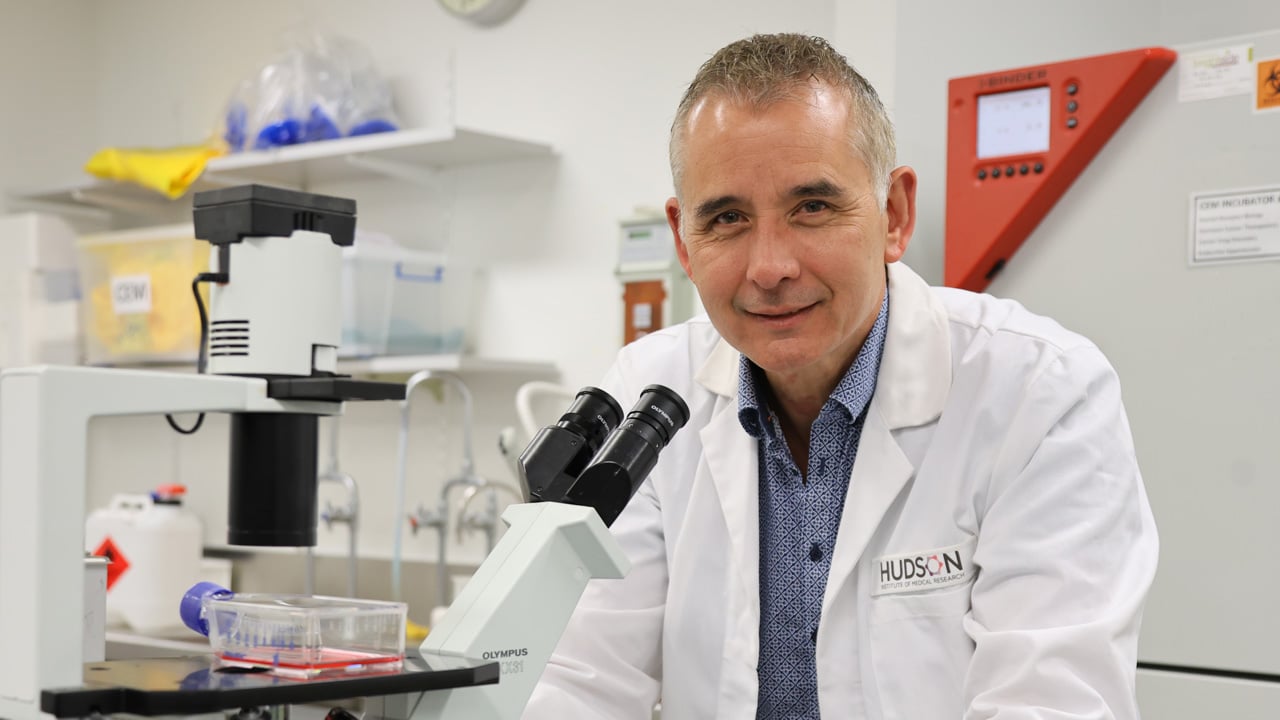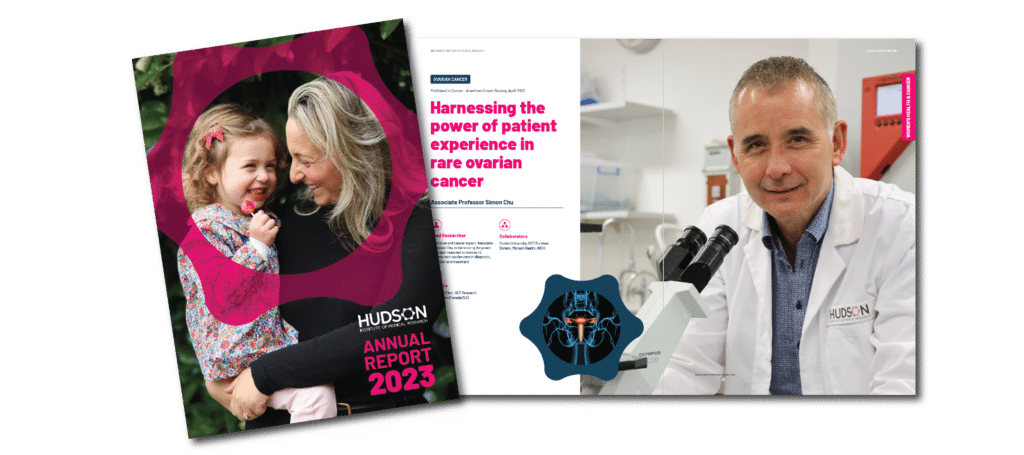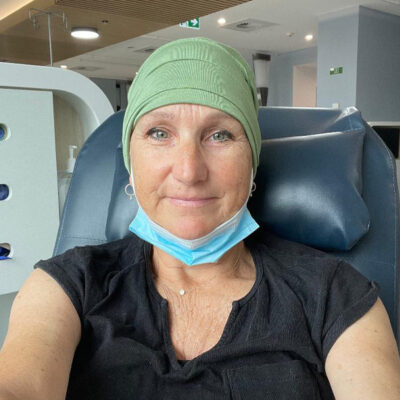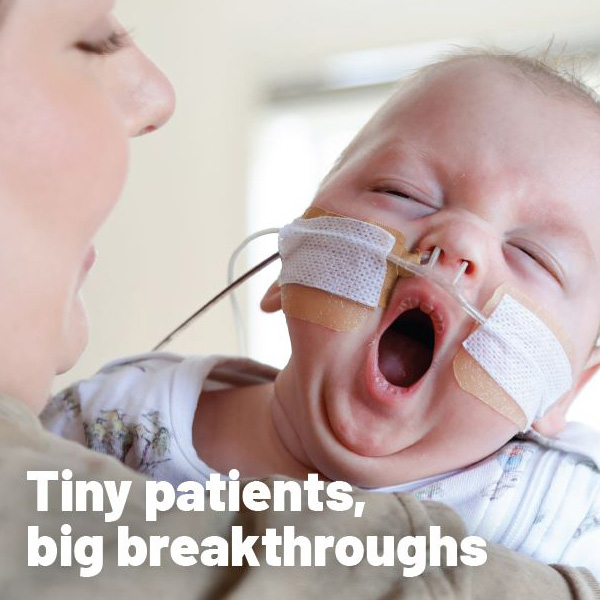The power of patient experience in rare ovarian cancer
By Rob Clancy, staff writer. Reviewed by Associate Professor Simon Chu

Sometimes help for scientific discoveries comes from the most unassuming places. Especially for rare diseases, the power of community can be the key to making a difference.
The challenge and the unexpected solution
For Associate Professor Simon Chu, the problem leading Hudson Institute’s research into rare ovarian cancers was getting access to large quantities of real-world data, and the solution came from a surprising place: social media.
GCT facts
- 5-8 per cent of ovarian cancer is GCT
- 100 women are diagnosed annually in Australia
- 3,000 women are diagnosed annually in the US and 4,000 in Europe
- 1,800 members of GCT Survivor Sisters Facebook group worldwide
- 40-60 years of age is the most common age of diagnosis, but GCT can develop at any age, even in children
GCT Survivor Sisters: a global community
While A/Prof Chu continued his search for clues to detecting and treating one of the rare ovarian cancers, Granulosa Cell Tumours (GCT), on the other side of the world a disparate group of women were dealing with the reality of being diagnosed with a disease their doctors knew little about.
Their initiative, in the face of an information vacuum, led to the formation of the Facebook group, GCT Survivor Sisters, with a global membership.
What is GCT?
Granulosa Cell Tumours (GCT) are a rare cancer making up five to eight per cent of malignant ovarian cancers. They can develop at any age, even in children. The condition has a high rate of late recurrence, meaning that even if surgery is effective, women live for years in constant fear that their cancer might return. Around 100 Australian women are diagnosed with GCT each year.
Survivor data informs research
For the Survivor Sisters, A/Prof Chu and his team represented hope and a chance to use their own experiences to increase knowledge of GCT within the patient, medical and research communities.
For the Hudson Institute team, the Survivor Sisters provided a unique information resource: a previously invisible pool of realworld data and, crucially, tumour samples on which to draw in their research.
When the Survivor Sisters went searching for information, the internet led them to Hudson Institute and a collaboration was born.
“Effectively, what this group has done is build a medical database with some amazing information. What’s even more special is that they chose to share their database, so we can understand the disease better through survivors’ experiences, learning what is important for them as well as provide precious patient tumour samples to help design better treatments,” A/Prof Chu said.
 “We sometimes feel that we’re struggling to get our doctor’s attention and that our disease is not taken as seriously as it should be. There are very few clinical trials which include treatments for GCT and hardly any that focus on GCT exclusively.
“We sometimes feel that we’re struggling to get our doctor’s attention and that our disease is not taken as seriously as it should be. There are very few clinical trials which include treatments for GCT and hardly any that focus on GCT exclusively.
For years we’ve tried to get a research team to use our data to advance knowledge and understanding of our disease and its treatment. Hudson Institute’s team is the first to indicate sincere interest and, from the beginning, it was obvious that they were sincere in their dedication to studying GCT.”
Kaye Ackermann, USA. GCT Survivor Sister
A unique collaboration
GCT Survivor Sisters has grown from a handful of women in the USA and UK to more than 1,800 members worldwide, including Australians, as part of the local organisation, ROCinc.
One unexpected result of their collective work is that they are now officially recognised in the scientific literature on this disease, with a seminal publication on the use of patient-reported outcomes appearing in Cancer, the main journal of the American Cancer Society, with an editorial written on the research.
“This unique collaboration has meant we are being contacted by women with GCT worldwide who want to donate their tumour tissue to help with our research,” A/Prof Chu said.
“They also contribute to our patient-driven research program, where the GCT Survivor Sisters identified a subject that has been of great interest to them, leading to a new study on the efficacy of radiotherapy for this disease.”
“Our direct engagement with survivors of this disease serves as a constant source of motivation, driving my ongoing commitment to understanding GCT and exploring improved treatment options. As a leading research group in this disease, the combination of new discoveries and access to state-of-the-art technologies makes this a particularly exciting and fulfilling phase in being involved in this work,” A/Prof Chu said.
Next steps in GCT research
The next major step is to conduct pre-clinical proof-of-concept work for the novel combination therapies that will hopefully lead to clinical trials for those with recurrent GCT.
This unlikely partnership provides a template for incorporating the patient experience into medical research, and a beacon of hope for women who previously felt very much alone.

Read more stories like this in the
2023 Annual Report
Collaborators | Deakin University; GCT Survivor Sisters; Monash Health; WEHI
This research was supported by | MRFF; ROCinc; GCT Research Foundation (Canada/NZ)
Journal | Cancer – American Cancer Society
Title | How social media can help to understand treatment experiences of survivors of rare cancers: Findings from the Granulosa Cell Tumor Survivor Sisters Facebook group member survey
View publication | https://acsjournals.onlinelibrary.wiley.com/doi/10.1002/cncr.34767
In this article
About Hudson Institute
Hudson Institute’ s research programs deliver in three areas of medical need – inflammation, cancer, women’s and newborn health. More
Hudson News
Get the inside view on discoveries and patient stories
“Thank you Hudson Institute researchers. Your work brings such hope to all women with ovarian cancer knowing that potentially women in the future won't have to go through what we have!”





